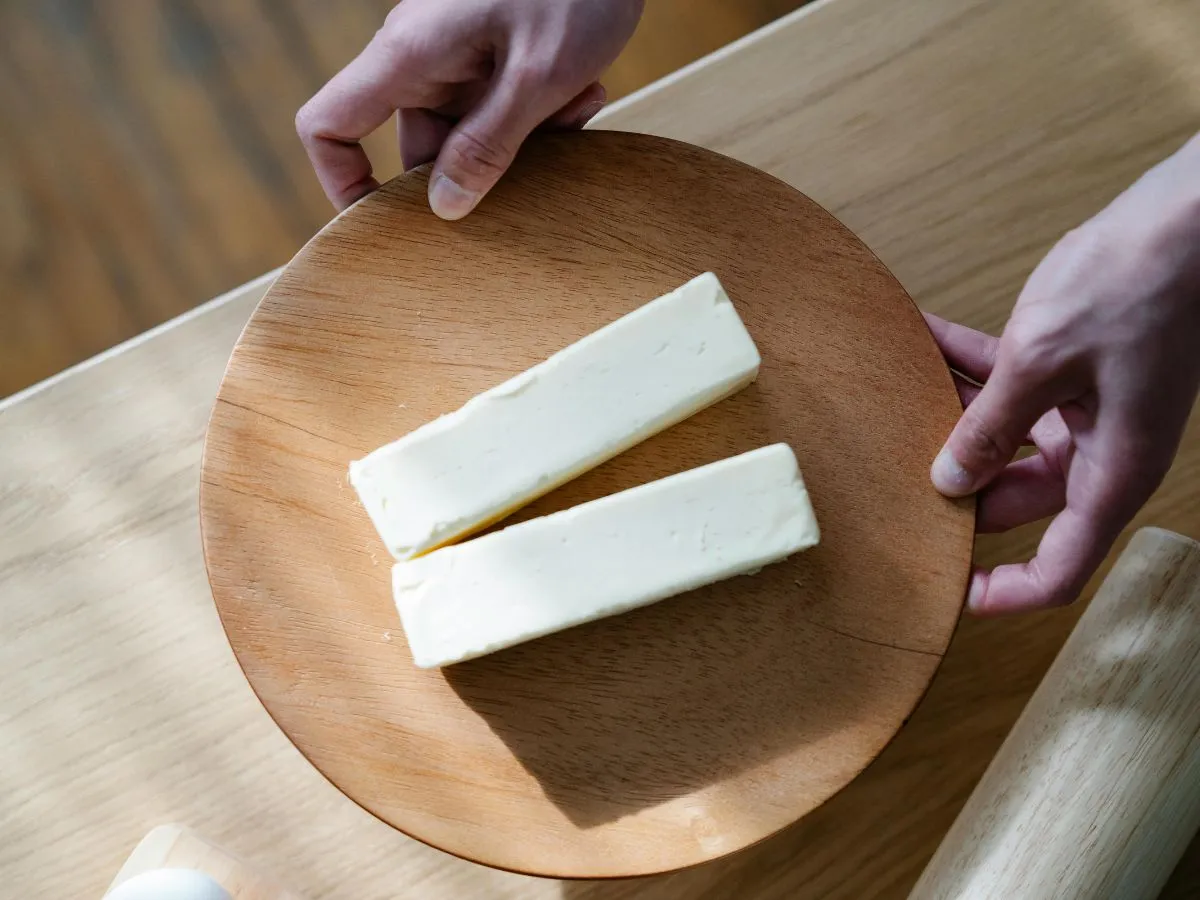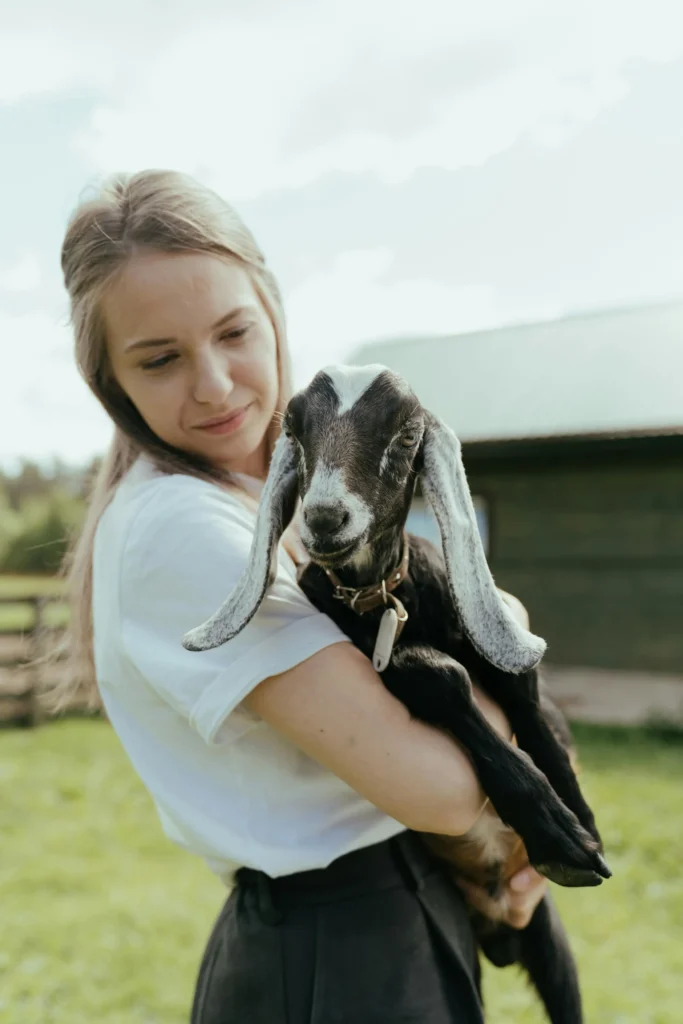Goats are treasures for food, meat, and milk. One of the best things we can make from homestead goats is goat butter, which we can utilize in making cookies, desserts, and pies as a replacement for cow butter.
My aunt manages the goats and all the livestock in our family homestead farm in North Carolina. One of the reasons we have more goats than cows is that goats require a smaller area (about 200 square feet for each goat) to live than cows, and they are more reproductive. The process of making homemade goat butter in an organic environment is awesome. It is tricky to collect cream and then extract butter because goat milk is naturally homogenized.
The primary and critical phase of making this butter was cream. Cream can be separated from goat milk either by a cream separator or by setting the milk in the refrigerator for about 24-48 hours. My aunt and I collect cream from each batch of milk that is about 3-4 tbsp daily and save it in the freezer. Sometimes it was a complete mess handling the cream, plus it yielded a minimal amount of cream. That’s why we bought our first cream separator in 2016. It doesn’t change life, but it was definitely worth buying.
Table of Contents
Methods For Cream Separation
There are two methods to separate the cream. The Gravity method or by a cream separator. The gravity method requires a lot of patience and effort. You refrigerate several batches of goat milk for 2-3 days or until you notice ½ or 1 inch of cream on top of each batch. Collect the cream for making butter.
What is Homogenization
Homogenization is a process in which two insoluble liquids are mixed through fat emulsification to form a uniform state. In the case of milk, this process involves breaking large fat molecules into small ones that mix. Homogenization makes the milk consistency uniform and makes the cream fat difficult to separate from it. Cow milk is not naturally homogenized. It is homogenized using high pressure in milk factories to break large fat molecules into smaller ones. Talking about goat milk, it’s naturally homogenized milk.
What is Cream?
Cream is basically the suspension of these fat molecules that rise to the top due to their lower density.
The Relation Between Cream Separation and Homogenization
If you are wondering why I don’t get a cream layer from a store-bought milk, then store-bought milk is homogenized. In a few words, homogenized milk creates difficulty in cream separation. Still not getting it, it’s okay!
If the milk is not homogenized, it forms a cream layer if it sits for some time. Just like if we place fresh cow milk to sit for some time, it develops a cream layer on top. The reason for cream formation is that insoluble fat rises to the top and coalesces due to gravity and its lower density than the rest of the milk. That’s why it is easy to make cow butter because of the easy cream separation in cow milk.
Goat milk has naturally small emulsified fat molecules (homogenized), making it easy to digest. It means the cream in goat milk takes longer to separate than cow milk. Sitting goat milk in the refrigerator for days will eventually form a cream layer, but it requires a lot of patience and effort. That’s the reason why getting cream from goat milk can be tricky.
3 Unique Features of Goat Milk
- In Homogenized milk, cream is mixed into the milk, so it doesn’t separate easily
- Low fat content in milk, so you need a lot of milk to extract cream
- Tiny fat globule that takes time to coagulate and form cream.
What Is a Cream Separator?
A cream separator is a device that uses centrifugation to separate cream and skim milk from raw milk. Raw milk is added to the milk pot. We collect cream from the top spout and skim milk from the bottom spout.
The Color Difference Between Goat Milk Butter and Cow Butter
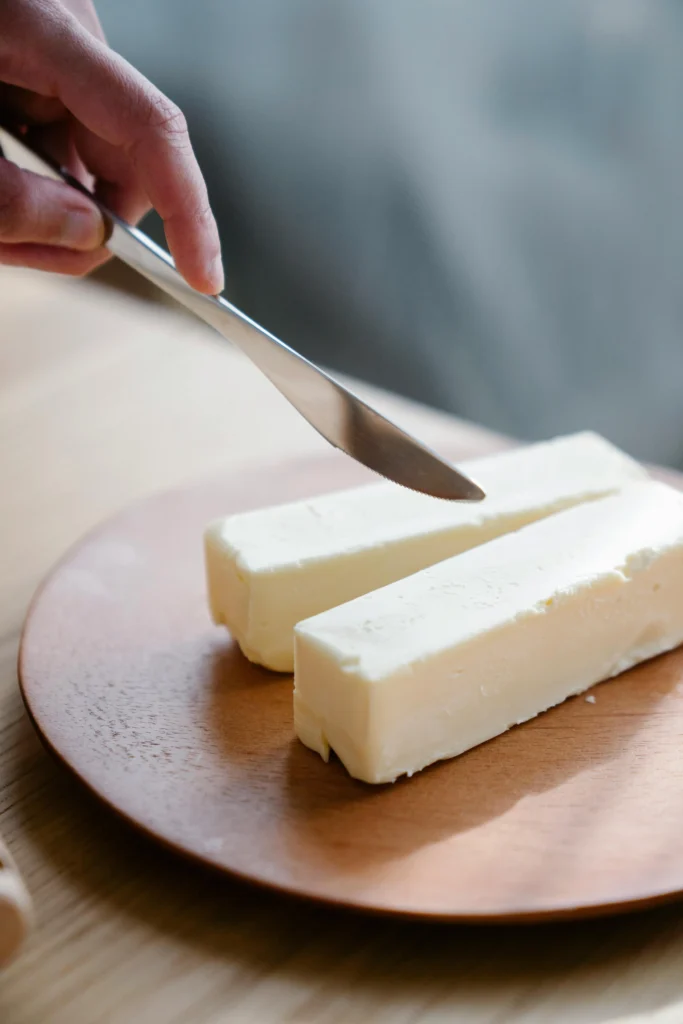
Beta carotene is a yellow pigment in milk. Goat butter is white because goats convert yellow beta carotene to colorless vitamin A. On the other hand, cows don’t convert beta carotene. That’s why goat butter is white while cow butter is yellow.
Equipment
- Cream separator
- Two large bowls for collecting cream and skim milk
- Digital thermometer
Ingredients
1 gallon of goat milk (approx. 3 liters of raw and fresh milk)
Instructions
1.Refrigerate the Milk
Refrigerate the fresh raw milk for 6 hours. Refrigeration is essential to get the maximum cream.
2.Warm the Raw Milk
Warm the raw milk to 100°F, which is the normal body temperature of goats while milking. Warm the milk slowly on the stovetop or in a double boiler and check the temperature with a digital thermometer.
3.Assemble the Separator
Wash, sterilize, and assemble the disks of the cream separator. Once assembled, close the valve (switch rod) on top of the separator’s milk pot. Turn the motor on and let it run for a few minutes to warm up the machine. Place the collecting bowls underneath their respective spouts.
4.Separate the Cream
Pour the warm milk into a milk pot of a cream separator and turn the valve on. Collect the cream and skim milk from their respective spouts in the bowls. I got 1 and a quarter cup of cream.
5.Whip the Cream Until You Get Butter
Whip the cream with any Kitchen Aid, hand mixer, Blender, or food processor. You can even do it by shaking the cream in a jar or a manual hand-crank churner. I use a hand-crank churner. First, you notice whipped cream, then this whipped cream coagulates to form butter granules. This is the point where you will see fatty butter granules and buttermilk.
6.Run Through Cold Water
Once the butter and buttermilk separate, save the buttermilk in a jar. Run the butter through cold water and rinse until the water runs clear. Press and fold the butter and remove excess liquid using a spatula or butter paddle.
7.Refrigerate
Shape and wrap the rinsed butter in a cup or paper and refrigerate to firm it up. The fresh homemade butter is ready to enjoy on toast.
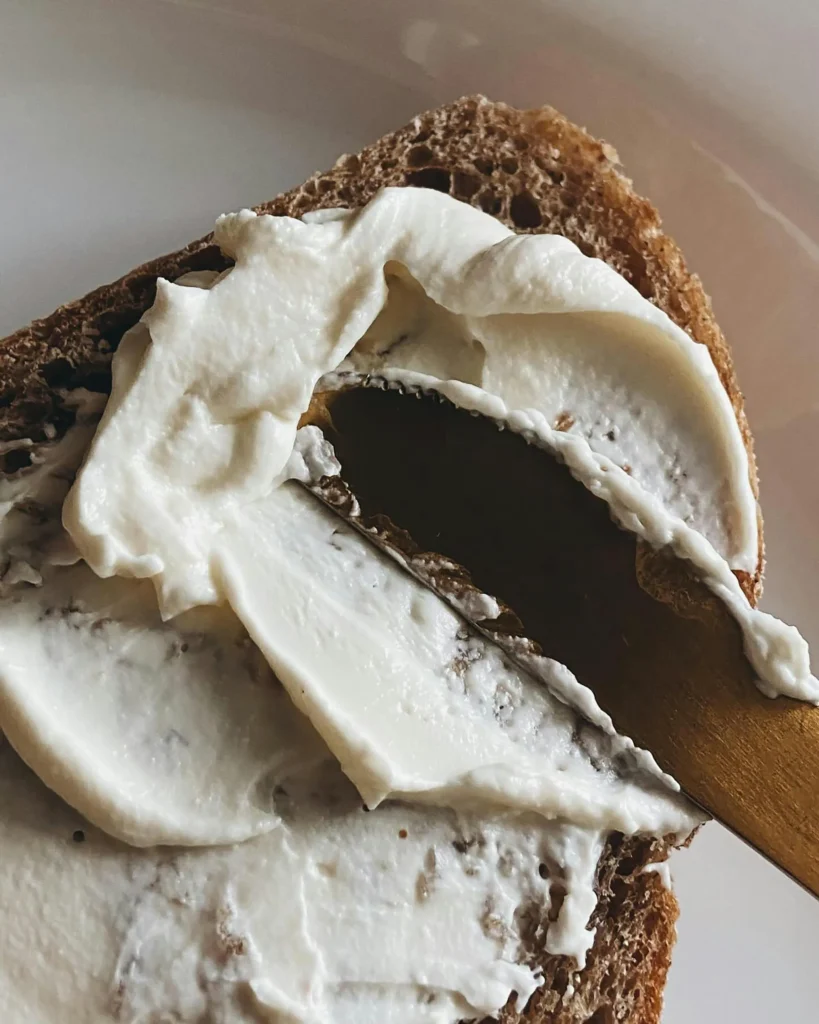
Expert Tips
- Refrigerate the raw and fresh milk before warming it to 100 degrees. Refrigerating the milk for several hours yields more cream than warming it straight after milking.
- Warm the milk slowly for even heat distribution. The slower the temperature rises, the better for making perfect goat butter. Once the temperature reaches our desired value, shut the heat off.
- Skim milk is used to make ricotta cheese or other desserts.
- Remove as much buttermilk as you can. If it remains inside the butter, it may turn rancid.
- Chill the cream because it will churn more easily than room-temperature cream.
- Flavor the goat butter with salt or herbs for additional flavor.

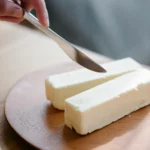
How To Make Goat Butter At Home
- Total Time: 1 hour
Description
Goats are treasures for food, meat, and milk. One of the best things we can make from homestead goats is goat butter, which we can utilize in making cookies, desserts, and pies as a replacement for cow butter.
My aunt manages the goats and all the livestock in our family homestead farm in North Carolina. One of the reasons we have more goats than cows is that goats require a smaller area (about 200 square feet for each goat) to live than cows, and they are more reproductive. The process of making homemade goat butter in an organic environment is awesome. It is tricky to collect cream and then extract butter because goat milk is naturally homogenized.
The primary and critical phase of making this butter was cream. Cream can be separated from goat milk either by a cream separator or by setting the milk in the refrigerator for about 24-48 hours. My aunt and I collect cream from each batch of milk that is about 3-4 tbsp daily and save it in the freezer. Sometimes it was a complete mess handling the cream, plus it yielded a minimal amount of cream. That’s why we bought our first cream separator in 2016. It doesn’t change life, but it was definitely worth buying.
Ingredients
- 1 gallon of goat milk (approx. 3 liters of raw and fresh milk)
Instructions
- Refrigerate the Milk: Refrigerate the fresh raw milk for 6 hours. Refrigeration is essential to get the maximum cream.
- Warm the Raw Milk: Warm the raw milk to 100°F, which is the normal body temperature of goats while milking. Warm the milk slowly on the stovetop or in a double boiler and check the temperature with a digital thermometer.
- Assemble the Separator: Wash, sterilize, and assemble the disks of the cream separator. Once assembled, close the valve (switch rod) on top of the separator’s milk pot. Turn the motor on and let it run for a few minutes to warm up the machine. Place the collecting bowls underneath their respective spouts.
- Separate the Cream: Pour the warm milk into a milk pot of a cream separator and turn the valve on. Collect the cream and skim milk from their respective spouts in the bowls. I got 1 and a quarter cup of cream.
- Whip the Cream Until You Get Butter: Whip the cream with any Kitchen Aid, hand mixer, Blender, or food processor. You can even do it by shaking the cream in a jar or a manual hand-crank churner. I use a hand-crank churner. First, you notice whipped cream, then this whipped cream coagulates to form butter granules. This is the point where you will see fatty butter granules and buttermilk.
- Run Through Cold Water: Once the butter and buttermilk separate, save the buttermilk in a jar. Run the butter through cold water and rinse until the water runs clear. Press and fold the butter and remove excess liquid using a spatula or butter paddle.
- Refrigerate: Shape and wrap the rinsed butter in a cup or paper and refrigerate to firm it up. The fresh homemade butter is ready to enjoy on toast.
Notes
- Refrigerate the raw and fresh milk before warming it to 100 degrees. Refrigerating the milk for several hours yields more cream than warming it straight after milking.
- Warm the milk slowly for even heat distribution. The slower the temperature rises, the better for making perfect goat butter. Once the temperature reaches our desired value, shut the heat off.
- Skim milk is used to make ricotta cheese or other desserts.
- Remove as much buttermilk as you can. If it remains inside the butter, it may turn rancid.
- Chill the cream because it will churn more easily than room-temperature cream.
- Flavor the goat butter with salt or herbs for additional flavor.
- Prep Time: 1 hour
- Category: Spread, Meal
FAQ’s for This Goat Butter
Is goat butter better than regular butter?
Goat butter has less lactose, which makes it easy to digest and good for people who are sensitive to high-lactose cow butter.
What does goat butter taste like?
Goat butter has an earthy, creamy, tangy, and grassy taste. It sometimes has a strong sour smell, but if you handle it carefully and rinse all the buttermilk, you will get a good taste. The sour smell is due to leftover buttermilk, which becomes sour if it isn’t rinsed properly.
Can you make butter from goat milk
Yes, you can but cream separation can be a little tricky. Goat milk has naturally small emulsified fat molecules (homogenized), making it easy to digest. It means the cream in goat milk takes longer to separate than cow milk. Sitting goat milk in the refrigerator for days will eventually form a cream layer, but it requires a lot of patience and effort. That’s the reason why getting cream from goat milk can be tricky. Once you get the cream from goat milk the rest is the same as for cow butter using a whisk, blender, or shaking cream in a mason jar.

